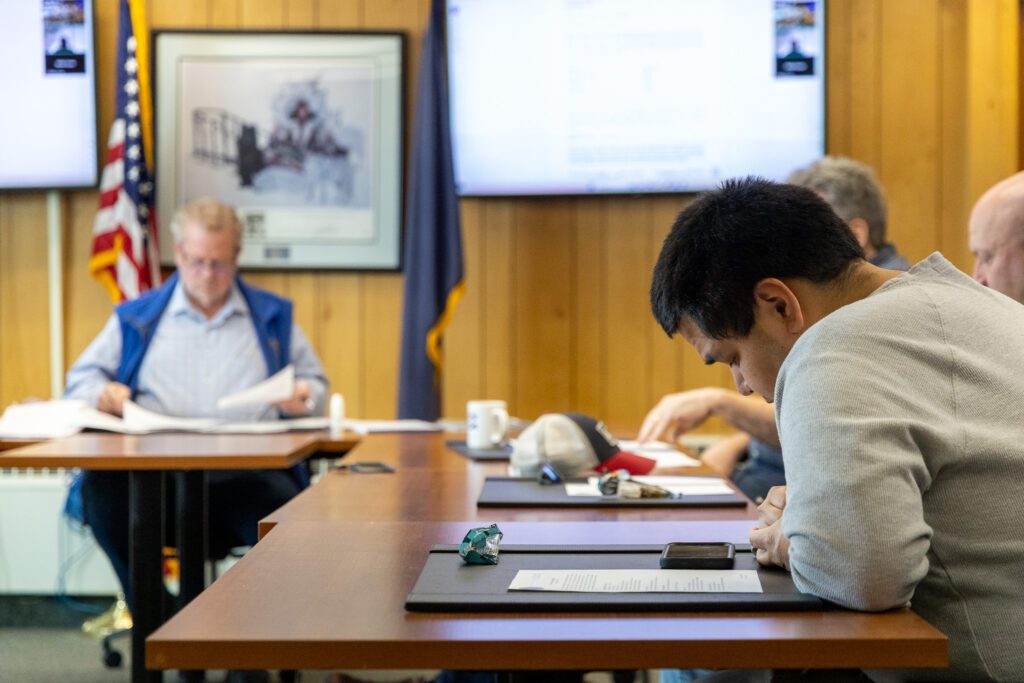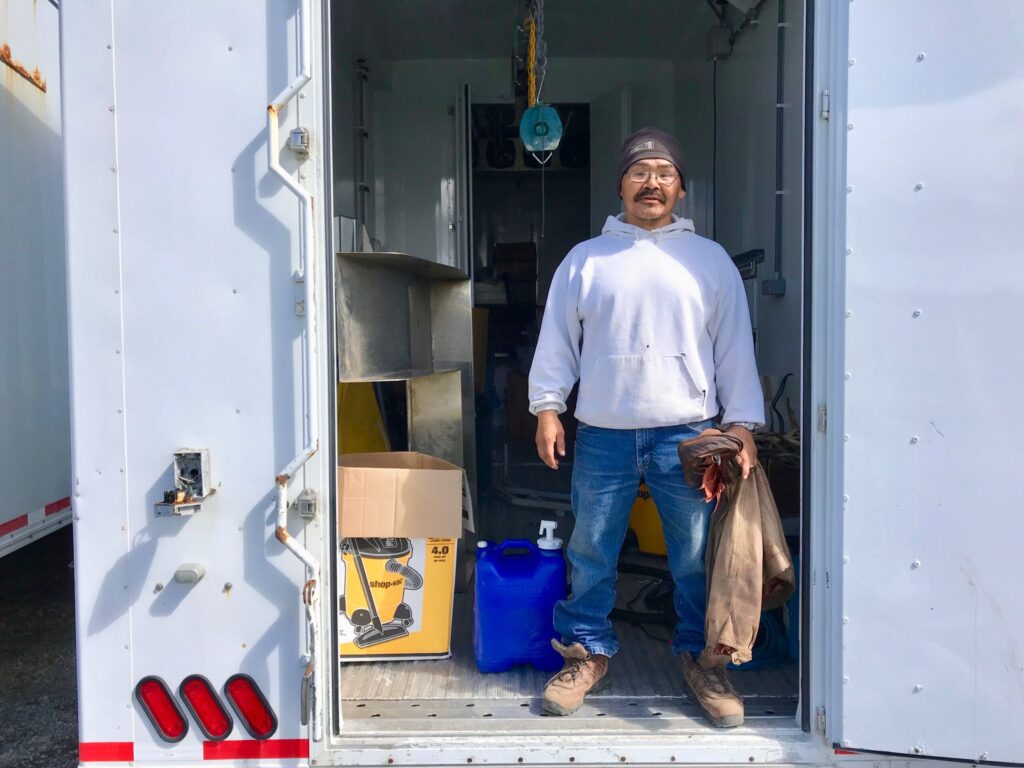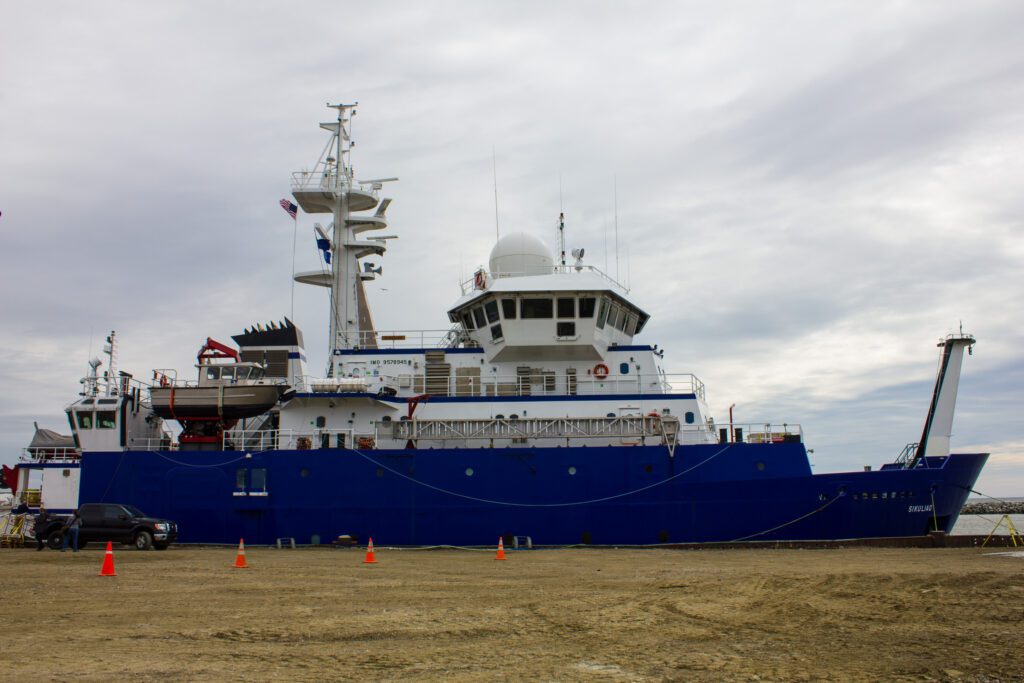What impact does warming Arctic water have on the movement of sea ice south each winter? That’s the question scientists with the new Sikuliaq research vessel are trying to answer on their trip out of Nome this October.
“What they want to do is head out of Nome and head up to the ice edge. And then follow the ice edge as winter comes on—following it as it works its way south,” said Daniel Oliver, operations manager for the Sikuliaq, whose Inupiaq name means “new sea ice.”
The high-tech, ice-classed research vessel is owned by the National Science Foundation, and it’s able to accommodate 26 scientists and students while transmitting information and video to classrooms around the world.
On this voyage, funded by the Office of Naval Research, scientists will be studying the increasing amount of open Arctic water, due to the retreat of sea ice further north each summer. Oliver said with more open water, fall storms can build up more waves.
“And they’re looking at what impact the greater wave density and the bigger waves have on causing that ice edge to be slower in working its way south,” he said.
For that trip, Oliver said they’ll be sending science parties out, as well as operating an autonomous air vehicle and ROVs to conduct surveys. The Sikuliaq will also feature a half-dozen Alaska Native ice testing sticks for safety during future research projects in Arctic waters.
This voyage will leave Nome on October 1 and return to Dutch Harbor in mid-November.







